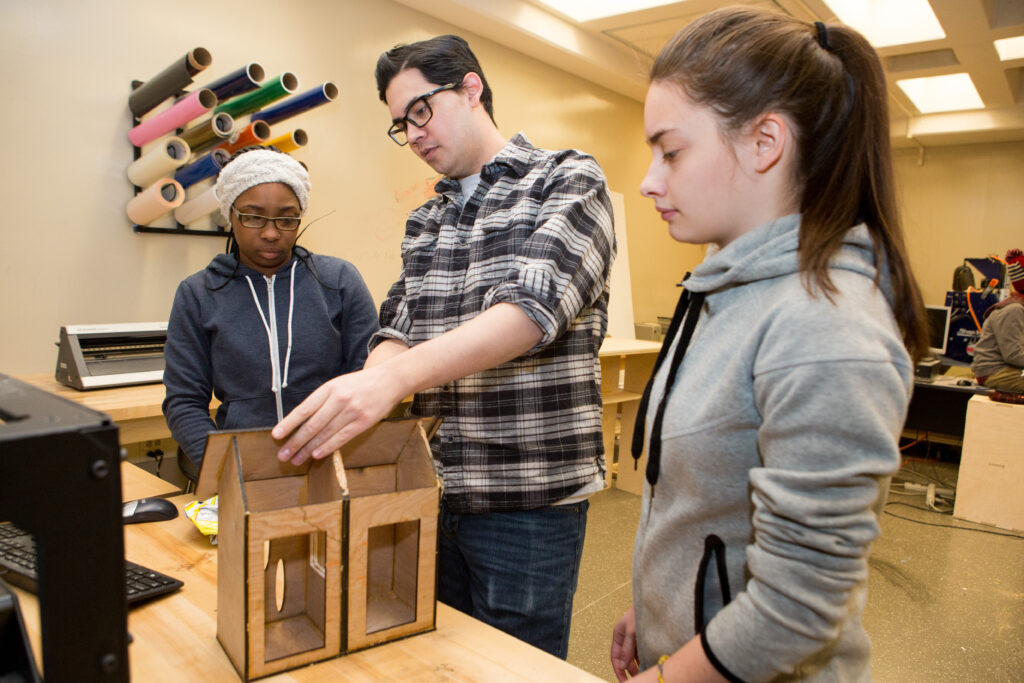
Sheilds Library at UC Davis.
Credit: Karin HIggins/UC Davis
The U.S. Department of Education is attempting to solve issues associated with this year’s rocky rollout of the Free Application for Federal Student Aid (FAFSA) and ensure colleges and universities release financial aid packages in a timely manner through a new plan announced Monday — but some California campuses remain pessimistic about receiving support.
This year, 17 million students across the nation completed the redesigned form and are now awaiting offers from colleges. Last year, more than 1 million California students submitted FAFSA applications, marking a 5.9% increase from the previous year, when Covid was said to have hindered the number of applicants.
Despite the department unveiling a simpler, quicker form in a “soft launch” on Dec. 31, this year’s FAFSA process has come with four-to-six week delays, and colleges and universities throughout the country won’t receive students’ financial aid applications until March at the earliest. As a result, many campuses are contemplating extending the May 1 commitment deadline for high school seniors whose decisions about where to enroll rest on the financial aid they receive.
“We’re not only talking about a better form or a better system. We’re talking about a better shot at accessing higher education for more than 600,000 American students. We’re talking about a better chance to go to college for students who would qualify for Pell Grants,” said Miguel Cardona, the U.S. secretary of education, at a news conference announcing the department’s plan Monday.
“We’re talking about making the American dream more achievable for so many more people who could realize the incredible potential they have through higher education but have been deterred by the cost and complexity of our current system.”
As part of the plan unveiled Monday, the department will send about 50 federal student aid officials to colleges and universities throughout the nation to help “prepare and process” students’ financial aid forms.
Senior Education Department officials did not provide a number or list of campuses that will receive support, but they emphasized that lower-resourced campuses will be prioritized, including historically Black colleges and universities and tribal colleges.
The plan also includes $50 million in federal funding for nonprofit organizations that focus on financial aid support. The department will also release test records for campuses to model.
“Ensuring our nation’s colleges and universities are prepared to assist in the massive overhaul of the FAFSA is critical for a smooth implementation, and we are excited to be partners in this work,” said Justin Draeger, president and CEO of the National Association of Student Financial Aid Administrators, in a statement.
“These are some of the biggest changes facing the financial aid profession — not to mention students and families — in decades, and it will take cooperation, clear communication, and mutual trust among all stakeholders to get us over the finish line. We are eager to begin this work and look forward to sharing more details soon.”
However, Cal Poly Pomona officials doubt the plan to support campuses outlined by the U.S. Department of Education will do much to help CSU, UC or community colleges in California. Charles Conn, the campus’s associate director of financial aid, also said the announced measures should have been taken months ago.
So far, the UC system has not decided whether to push back the May 1 deadline, but Rachel Zaentz, a spokesperson for the UC Office of the President, told Inside Higher Ed that the delays might have “significant implications” for students’ decisions.
Several Cal State campuses, however, have opted to adjust their timelines — as that is something officials say they can control.
Cal Poly Pomona, for example, has updated its commitment deadline for incoming first-year students to June 1 as a result of the delays, according to Jessica Wagoner, the campus’s senior associate vice president for enrollment management and services.
“It’s heartbreaking … to see this happening and know the impact that it has on the students, especially first-generation students from a lower income, or even the lower middle-class students,” Conn said.
“They’re relying on this information, and the Department of Education has really failed the graduating class as well as students who maybe are looking to transition from a community college over to a four-year college.”
Typically, Cal Poly Pomona would determine aid offers by the end of February. This year, as a result of issues with student information systems and the Department of Education’s delays, they probably won’t be able to extend offers until the middle of April.
Conn added that delays will likely challenge students who need to update their records and that there are still some families unable to complete the FAFSA — including families where at least one parent doesn’t have a social security number.
“That’s a big population,” Conn said. “It’s not like two or three students. It’s in the hundreds if not thousands of our students that fall into that scenario across the system.”
Most continuing students, however, will not be impacted, Conn said.
Delays with the FAFSA have also affected Cal Poly Pomona’s other operations and the ability to predict the nature of the incoming class, ranging from the number of students attending to the distribution of different majors, according to Traci Lew, the interim associate director of admissions.
It also tightens the turnaround time for organizing campus events such as orientation — which takes place 10 days after the June 1 deadline.
Despite the challenges posed by the later deadline, Lew emphasized that “we can’t allow families to make shotgun decisions.”
“We want to help our students, and right now we can’t. We are blind to the information,” Wagoner said. “So if they call us, there’s nothing we can say to assist and support our students. We should be on the phone helping them, guiding them, and we can’t do that.”





